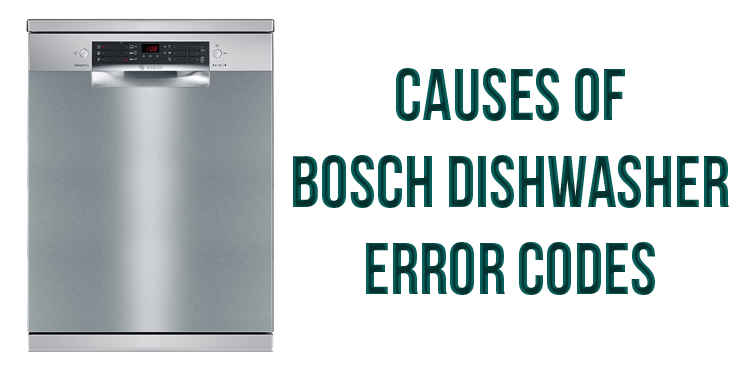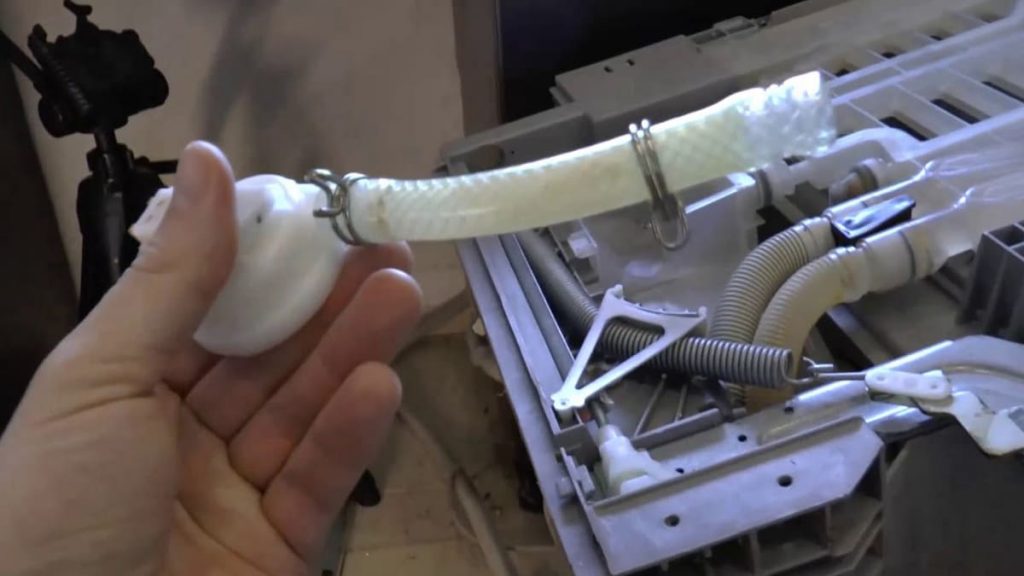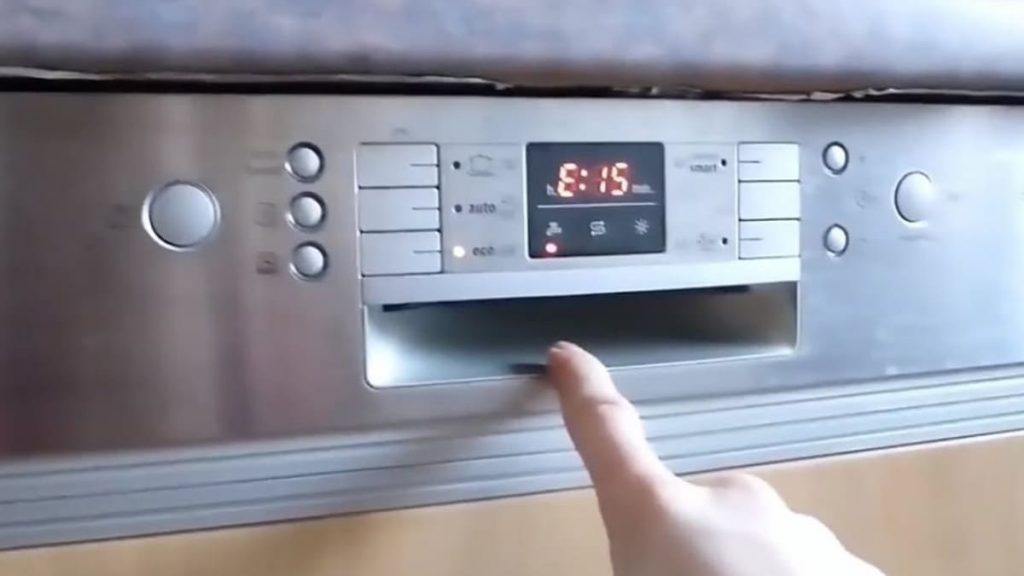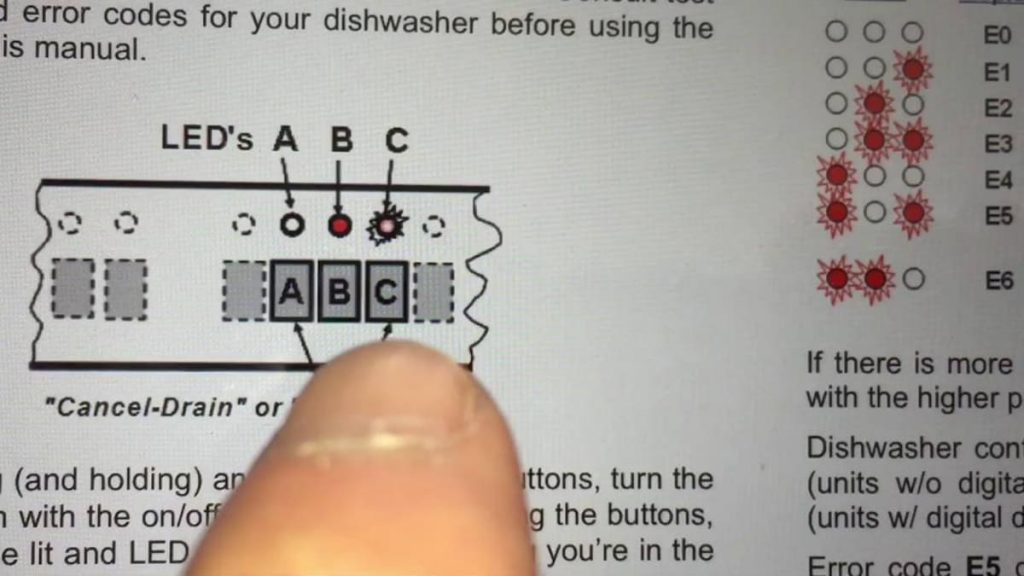Bosch dishwashers are equipped with a diagnostic system with which you can find out the cause of a hardware failure. Error codes that the system issues indicate the need for prevention, repair, or adjustment. Knowing the meaning of error codes allows you to quickly troubleshoot.
Causes of Error Codes
In the diagnostic testing mode, when the stored trouble codes are received from the memory, the E0 code is displayed.
Error code E1, E2
Problem with thermistor or temperature sensor. The sensor is located under the tank of the machine, to access it you need to remove the front cover of the dishwasher.
Error code E3
Displayed when the dishwasher does not draw water within the allotted time.
If the water pressure in the water supply is normal, shut off the supply and unplug the machine from the mains. Disconnect the supply hose and check the operation of the water supply valve, if you find a malfunction, replace the valve. Check the faucet. If it is clogged, replace it. Do not attempt to clean the faucet as this will cause it to get stuck in the open position and cause the machine to overflow.
Error code E4
Faulty water flows control sensor.
Most often, the malfunction is caused by deposits on the sensor wheel. It stops rotating and does not record the amount of water that has entered the machine. The part cannot be repaired, the sensor is simply replaced.
Error code E5
Filling the tank with water.
To check, you can turn the machine off and on again. If the error persists, the repair is required. Most often the float switch is faulty. On some models, indicates an engine speed error.
Error code E6
Water sensor malfunction. The sensor is used to monitor the state of water: pollution, turbidity, and transparency.
Error code E9
The code is displayed when there is a problem with the heating element. In some cases, the cause may be the oxidation of the contacts of the control relay on the board.
Error code E15
The signal from the flood sensor. The code indicates a leak in the machine.
A leak can be caused by:
- loosening of clamps;
- violation of tightness of gaskets;
- malfunction of the drain hose;
- corrosion in the washing tank;
- damage to supply hoses, etc.
To determine the cause of the leak, remove the side panels and conduct a visual inspection.
Error code E22
Water remains in the pan due to blockages in the drain system. Filters need to be cleaned.
Error code E24, E25
Drain error. The drain pump is defective. If the pump runs but the water does not drain, check the check valve.
Error code H24
The pump or drain hose is blocked. Caution: The water that flows out can be very hot. Resetting the error code is required before restarting.
Service testing program
Bosch dishwashers have a test cycle that starts each step of the washing program in sequence. This allows you to determine the moment of occurrence of the malfunction and gives a general idea of the problem.
Directly, the test mode is not available but can be activated by pressing a key combination. The way you start the test cycle may vary slightly depending on the model, but the basic steps remain the same. Button labels may also vary. The correct combination can be found by holding buttons with similar functions. The order in which test tasks are executed also depends on the model.
Entering test mode
Bosch washing machine control panels are equipped with rotary controls and buttons. The display or LEDs can be used as an indication. To sign in, follow these steps:
- Connect the dishwasher to the mains.
- Hold down the Regular Wash and Power Scrub Plus buttons.
- Press the power button, then release the previously held buttons.
- The indicators on the buttons should flash.
- Press the Regular Wash and Power Scrub Plus buttons again, if everything is done correctly, the test cycle will start.
- If there is a fault, an error code will be displayed at the end of the cycle.
The range of codes E01-E05 may indicate a malfunction of the power supply. Programming power modules are blocked, if these codes are displayed, contact a Bosch service center.
Displaying error codes
The test program can only be stopped or reset using the on/off button. Turning off the power will not stop the program, after connecting the machine to the network, the program will continue its execution. Stored error codes will be displayed via LEDs or digital displays.
In machines with LED indication, the error code of the last cycle is stored. If multiple codes are found, the code with the higher priority will be displayed. Dishwashers equipped with digital display store codes for the last eight wash cycles.
Reset errors
Some error codes may continue to be displayed after the causes of their occurrence are eliminated. If you are sure that you have successfully dealt with the problem, you need to reset the error. To do this, hold the power button for 10-15 seconds.
Operating rules
In order for the equipment to perform its functions, it must be looked after and follow the instructions prescribed by the factory:
- Specialized detergents. In Bosch dishwashers, only specialized products should be used in compliance with the dosage.
- Dishes “two in one”. This way of saving space makes it difficult for the circulation of detergents and water. There is also a chance of damage to the dishes.
- Leftover food. By removing large food residues from dishes before washing, you will reduce the likelihood of clogging. There is a special soaking mode for pans and pots.
- Overload. The characteristics of the model indicate the allowable number of kits for loading. To avoid breakdowns, pay attention to these data.
Do not load utensils into the machine that are not intended for this: wooden cutting boards, crystal sets, or cutlery decorated with mother-of-pearl or wood. Such accessories not only lose their appearance after cleaning the machine but can break and damage the inside of the car.





